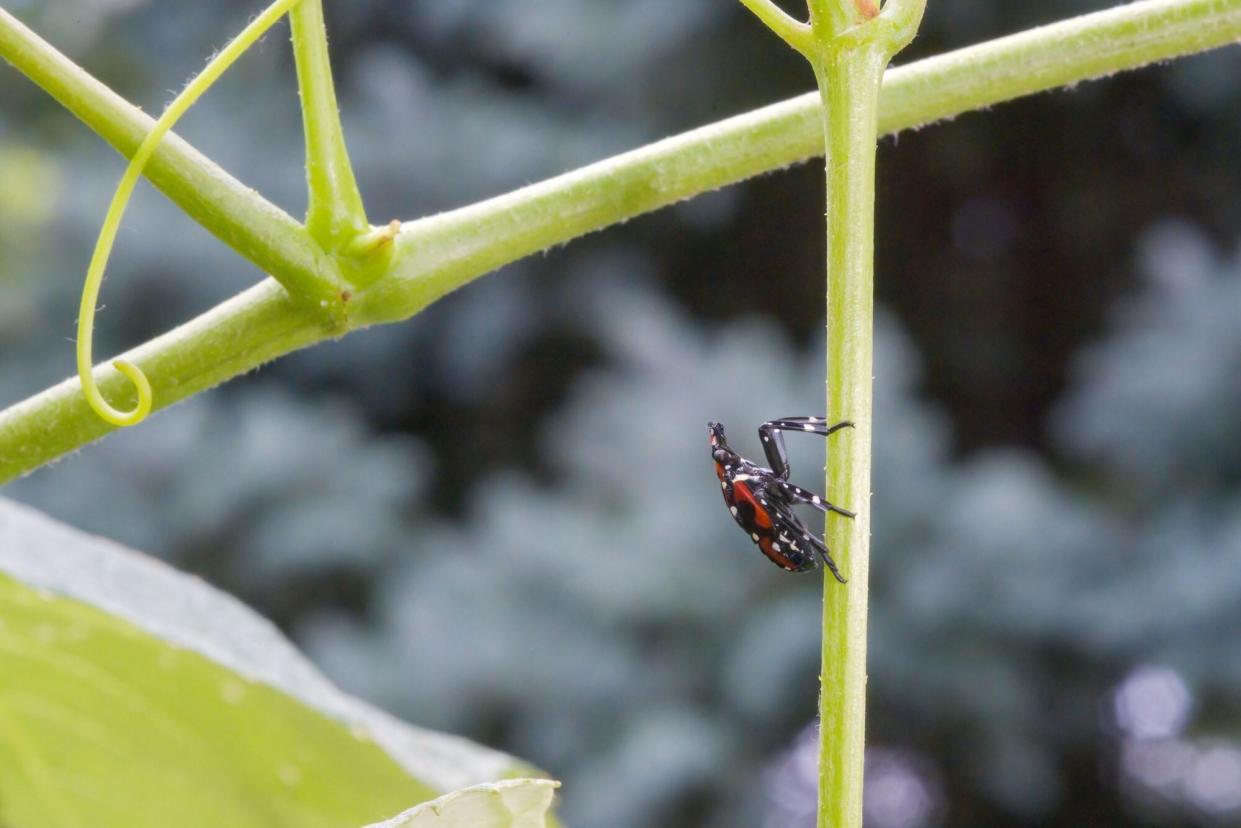Spotted Lanternflies Are Eating Our Vineyards, Too

GH Photos / Alamy Stock Photo
Frost, fire, disease: Vineyards face all sorts of pitfalls that can damage their yields. One of the biggest consistencies in winemaking is inconsistency — something that's become even more common with climate change. And in recent years, vineyards on the American East Coast have been battling a new literal pest: spotted lanternflies.
The winged insect indigenous to China was first seen in the U.S. in Pennsylvania in 2014, and according to the USDA, has since spread to 14 states: Connecticut, Delaware, Indiana, Maryland, Massachusetts, Michigan, New Jersey, New York, North Carolina, Ohio, Pennsylvania, Rhode Island, Virginia, and West Virginia. The pests can feed on a wide range of trees and vines — including those producing apples, cherries, grapes, and hops — with the government warning of their potential to "seriously impact the country's grape, orchard, and logging industries."
Some Eastern vineyards have already felt the effects. CNBC reports that Maryland's Fiore Winery has seen its 2022 production cut in half as lanternflies attack its vines and deprive them of nutrients. In Virginia, winemakers are already bracing themselves for similar issues as the pests move south. "I know we don't have to figure it out today. We may not even need to next year. But eventually we'll need a solution," Karl Hambsch, head winemaker at the state's Loving Cup Vineyard, told Radio IQ back in August.
Helping to impede that spread is the lanternflies' own physiology which limits their flight range, however the insects and their eggs can travel longer distances by stowing away in cars, trains, or planes. In June, researchers at North Carolina State University made the dire prediction that spotted lanternflies could arrive in America's top wine-producing state — California — as early as 2027 and are likely to infest its grape-producing regions by 2034. "This is a big concern for grape growers; it could lead to billions of dollars of losses in the agricultural sector," lead author Chris Jones stated. "We hope this helps pest managers prepare… If they can start early surveillance, or start treating as soon as the spotted lanternfly arrives, it could slow the spread to other areas."
Back on the East Coast, states where the spotted lanternfly has already been seen all have reporting systems in place to try to track its spread and keep it in check as best they can. But it's of little consolation for vineyards that have already been hit. "For quite a while, we thought we were just going to be out of business," Larry Shrawder told CNBC. His Stony Run Winery in Pennsylvania was one of the first to deal with an infestation four years ago. "The 15 percent of the vineyard we lost translates to about 30,000 bottles per year and about $525,000 worth of product a year that was taken out by the flies."

